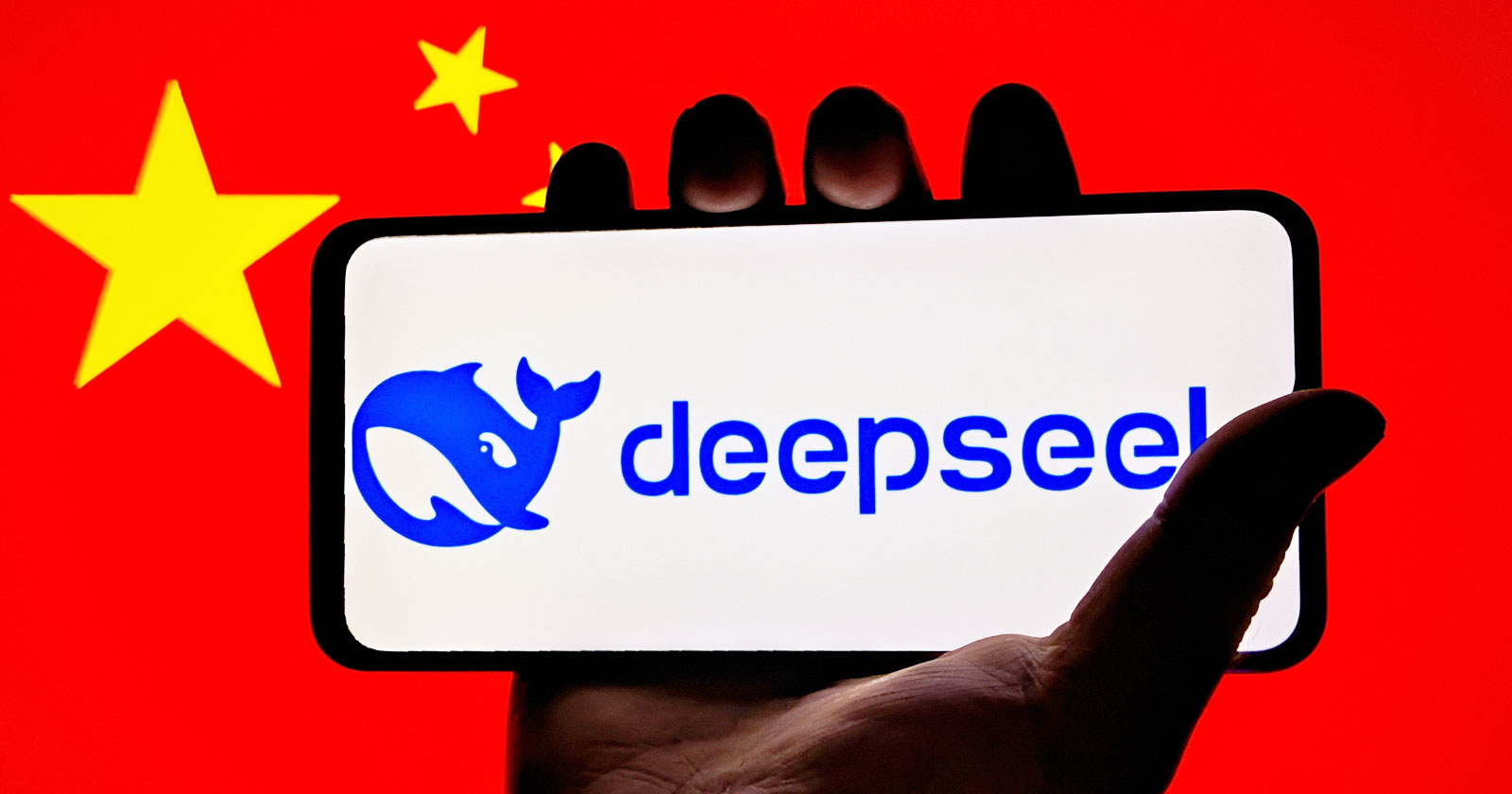How Video Can Humanize Your Brand in 2022 & Other Insights from Wistia's CEO
One of the main things we've learned during the COVID-19 pandemic in regards to how people consume content is that they want to be entertained in different ways.

One of the main things we've learned during the COVID-19 pandemic in regards to how people consume content is that they want to be entertained in different ways. Consumers want the convenience of being able to consume content where they spend the most time, and on their own terms. If your brand doesn't give consumers this option, then you're missing out on a big fraction of your audience — that's where the powerful tool of video comes into play. In our recent 2022 State of Video Report, we found that people were watching more videos than ever before in 2020 as many spent extended periods of time at home due to the pandemic. But even more shockingly, as the world opened up and employment rates rose, consumers watched even more video content. With all this talk about video, you may be wondering a few things: What length should my video be? How do I create videos that stick? And where should I promote my videos? In other words: What's the best video marketing strategy for 2022 and beyond? HubSpot Blog Research surveyed 518 video marketers in the U.S., Germany, France, Japan, Australia, and the U.K. to find out about their goals and strategies going into 2022. Let's dive into what you need to know so you can make your next, or first, video strategy a success. Short and sweet is generally a safe strategy — especially if your company is just starting to use video. According to 36% of video marketers, the optimal length of a marketing video is one to three minutes. If you're new to video, starting with short-form videos will help you get a feel for what resonates with your audience and where you can add the most value. Consumers are inundated with videos, so it's critical to create meaningful content that can be consumable within a few minutes. Shorter videos are great for establishing an initial connection where you can introduce your brand or product. For instance, a snappy video showcasing a product feature can build interest and anticipation before a product launch. We know that time, resources, and cost are three major barriers to creating videos. The solution? Shorter videos — they are less time-consuming, perfect for various platforms (like social media), and typically cheaper to produce. Short-form videos lead in usage (58%), ROI, lead generation, and engagement. So, if you're looking to get more bang for your buck, then shorter videos are the way to go. In fact, 83% say the optimal length is under 60 seconds. Believe it or not, longer videos are also on the rise. With more brands planning to create original branded series, product-specific demos, case studies, and customer stories this year, it's important to find what works best for your company and audience. What people are willing to watch is correlated to how connected they are to your brand or video topic. Don't underestimate how much time someone will spend with your brand. People who want to learn more about your company or product will do so through long-form video content, such as a webinar. Yes, shorter videos will be the most leveraged form of video this year, but don't take creating long-form video content completely off the table. Most B2B marketers often don't take a video-first approach when it comes to their social media strategy. But here's why you should. Social media is the top channel used to share marketing videos (76%) and has the biggest ROI by far. Incorporating video into your social media strategy differentiates your brand and can bring your brand's story to life in ways that other content can't. So, what social platform(s) should you use? Begin by identifying your business and marketing goals. Once you have those set, nail down your strategy by figuring out how video will meet those goals. This will help give your video strategy a framework and determine which social media channel can tell your story. For example, while Instagram is the top social media platform for ROI, engagement, and lead generation for marketing videos, that doesn't necessarily mean it's right for your brand. Figuring out what social platforms to use depends on whether your brand is B2B or B2C, and what type of video you want to create. Customer stories or case studies might do really well on a landing page, whereas company culture videos would do really well on LinkedIn. For B2B, LinkedIn and Twitter – my personal favorite social channels – are good places to start. You may gradually incorporate other platforms into your social media strategy, but if you aren't engaging on LinkedIn and Twitter, then you're missing out on a big opportunity. If you're B2C, you should be on Instagram, TikTok, and Facebook. Have I convinced you yet that your brand needs to start using video? If your answer is yes, you may be wondering if you should try and create videos yourself or hire an agency. While nearly half (49%) of video marketers create videos both in-house and with an agency, it can be tough to figure out what route you should take. If you're thinking about doing video in-house, you need to figure out what types of video and how many you want to create for your business. Maybe you want a video that answers frequently asked questions or one to onboard new users. These types of videos don't always need the flashiness of a branded series. Doing videos in-house can help save you money and empower your team to get involved. And, there are certainly many DIY resources to help you create video in-house. You may even have employees who have video experience and can help pitch in. HubSpot's report found that 69% of video marketers own their video equipment. Agencies that specialize in marketing videos are certainly worthwhile if you are looking to create an array of public-facing video content. Zeroing in on an area of your business where video can make a big splash will help the agency tailor a video strategy that meets your goals. I suspect that companies are going to invest more of their time in creating in-house videos in the coming years — but most of these videos will be created by people whose job isn't strictly focused on video. Whether it's someone on your design team creating a product tutorial or your CEO leading a webinar, there will be an uptick in businesses that leverage internal resources to create their video content. The good thing is that there is countless video editing software that your company can use. According to HubSpot's Blog Research, Adobe Premiere Pro (36%) and iMovie (18%) are the most popular video editing software, but you'll definitely want to explore all your options. Thinking about doing more in-house video content? Make sure you have the right amount of people helping with your video content. The majority of marketers (45%) have two to five people on dedicated video marketing teams; with another 37% reporting six to 10 on a dedicated video marketing team, and 15% reporting 10 or more employees on a video marketing team. While this is dependent on your business and where you are in your video journey, it's important that you have a solid in-house team that can handle the amount of video that you intend to put out there. The most important factors for creating an effective marketing video are effectively promoting your video (36%), capturing viewers' attention in the first few seconds (36%), and keeping your videos short/concise (33%). All marketers want their videos to be successful — but what your audience takes away from your video content is perhaps the most important. As an example, let's say your video isn't getting enough clicks. You need to put yourself in the consumers' shoes and figure out why they didn't engage with your video. More times than not, they aren't getting what they expected. To solve for this, you'll want to ensure your video thumbnail is encouraging people to click your video. Your thumbnail offers a first impression of your video, so make sure you use it to tell potential viewers what your video is about. Interest wanes as viewers get distracted or realize the video isn't for them. The best way to grab the attention of viewers is to hook them the moment the video starts. For example, the John Wick: Chapter 3 - Parabellum trailer tells viewers the title of the movie within the first few seconds rather than saving it to the end. You also need to approach video creation similar to how a journalist writes a news article — where the first line is the entire crux of the story — rather than approaching a video as a movie. It's often better to put what consumers need to know upfront. Once you've created a dynamic video that grabs viewers' attention, it's time to start thinking about promotion. While the most effective video promotion strategy is promoting on social media (63%), there are other effective, and fun, ways to get the most out of your video. Ever click a link and wind up on a 404 error page? This can be frustrating for the consumer, but use this as an opportunity for your brand. Making your 404 pages friendly and helpful to avoid deterring potential customers can go a long way. Add videos to these pages to help guide viewers back to the main page and highlight your products in a non-intrusive way. Creative looping videos or videos of team mascots can help customers feel connected to your brand. If you've ever found yourself on a 404 error page on the Wistia site, chances are you have seen our team mascot Lenny: Video content showcasing your products/services is the most leveraged type of content and has the highest ROI, according to 66% of those who use it. Content that reflects your brand's values is the second most leveraged type of video content. With this in mind, you need to figure out how you want to portray your brand within the content. Do you want it to be relatable? Would adding a nostalgic element to your video add value? Asking yourself these questions will help kickstart the video process. Trendy, funny, and interactive content all have high ROI and can boost engagement. Nostalgic content and user-generated content (UGC) consistently rank in the least popular types of video content, though nostalgic content will still see 19% of video marketers using it for the first time this year, compared to 3% for UGC. Let's face it, millennials are becoming the decision-makers. Marketers need to focus on incorporating emotional elements into the content they produce. Topics that harken back to millennial youth, like Saturday morning cartoons, is a great way to instill nostalgia and emotionally connect with viewers. Once you make a video and feel confident, you have the power to make more. As companies invest in video, I predict they'll put out more short, authentic, niche, and relatable content. Why? Because this type of content is what consumers crave. Video helps to humanize your brand and makes consumers feel like they can relate to you. Brands need to figure out how to not only educate, but also entertain. With so many brands competing for viewers' attention, it's up to you to keep people coming back to your brand. With the right video strategy, you'll be able to achieve strong, lasting relationships with your audience.What is the optimal length of a marketing video?
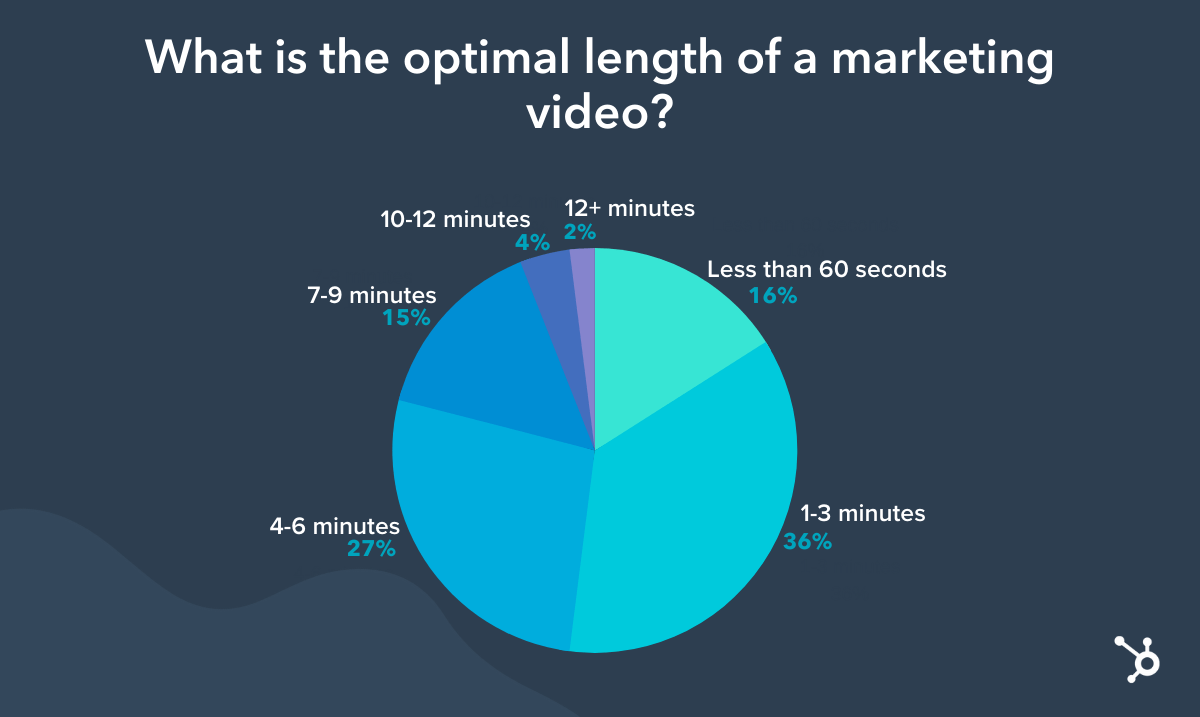
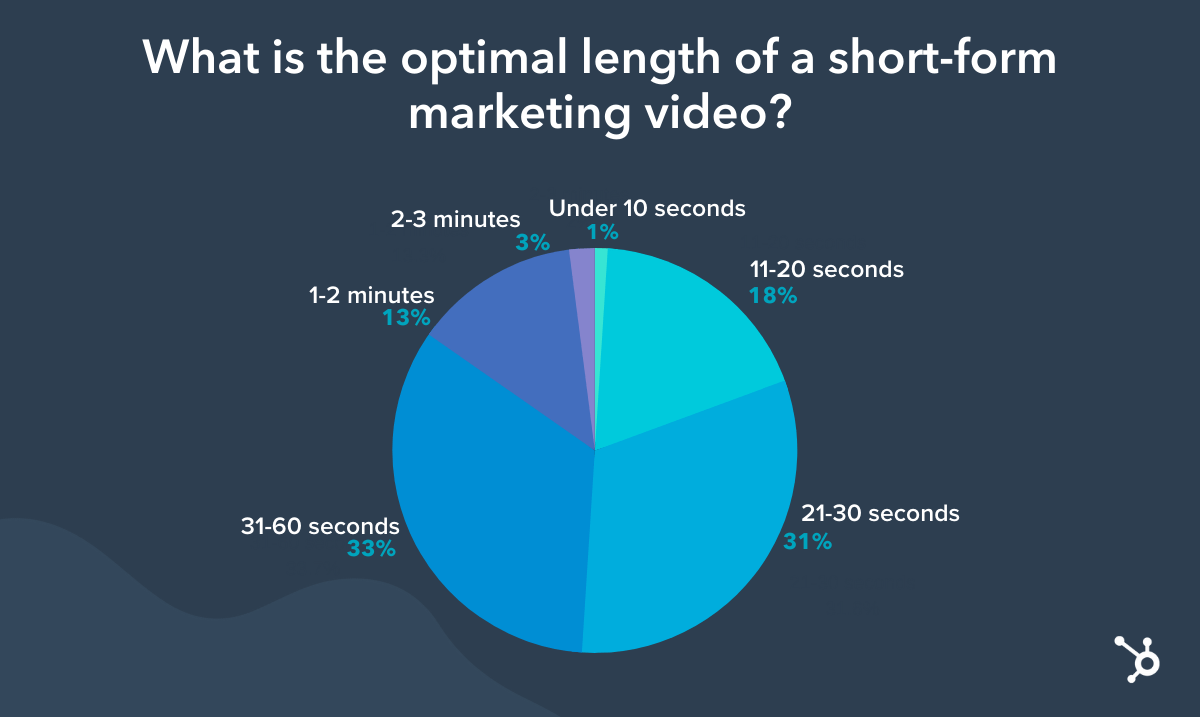
Which social media channels should your content live on?
Do video marketers create videos in-house or with an agency?
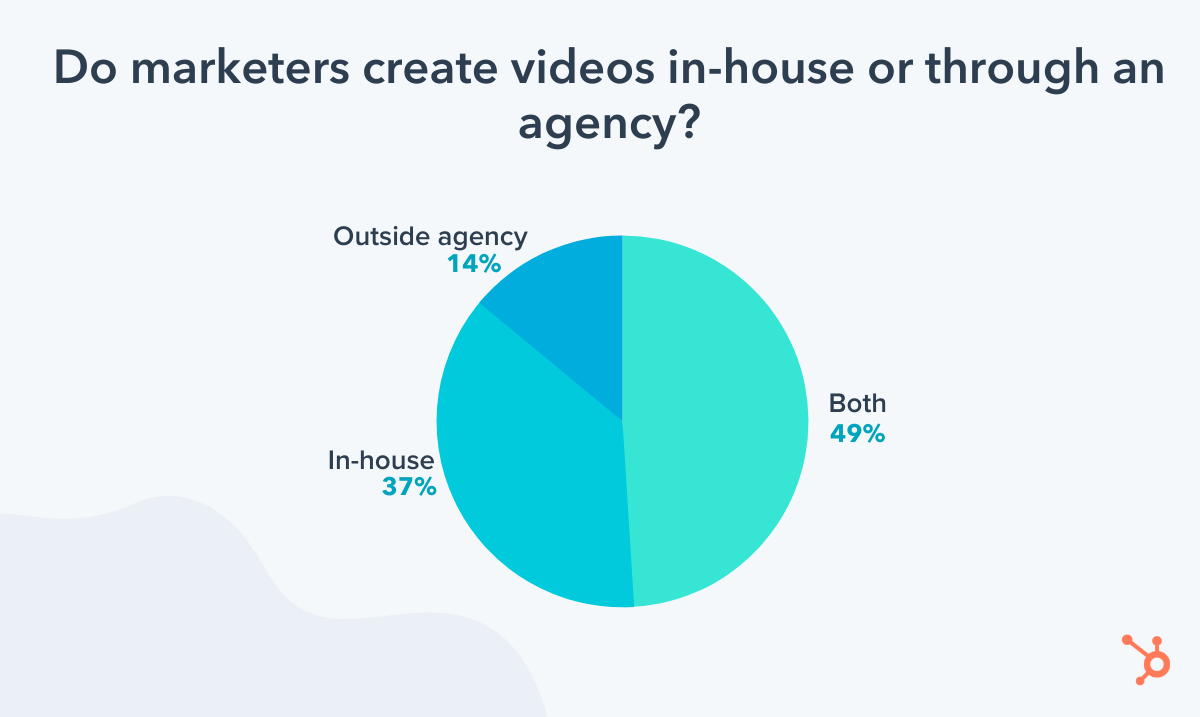
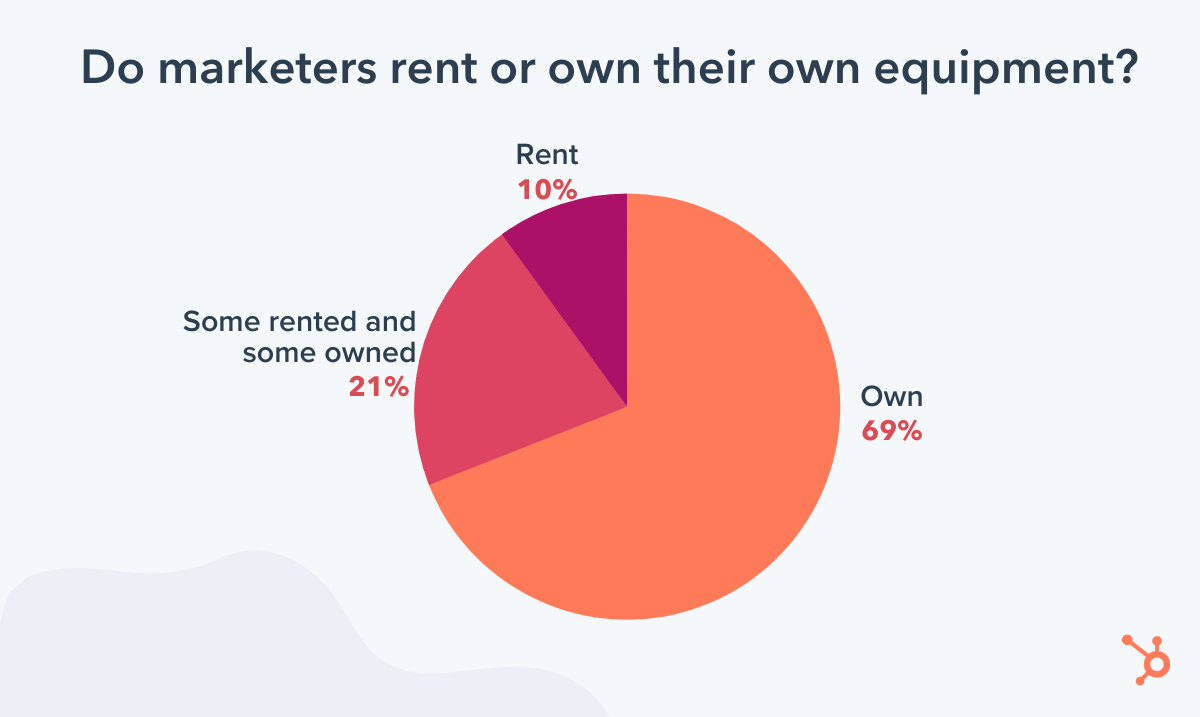 Additionally, we found that most companies use their own in-house video experts to create video content on a weekly or monthly basis. Other companies rely on a mix of talent, calling on freelance help and video production agencies to fill in the gaps.
Additionally, we found that most companies use their own in-house video experts to create video content on a weekly or monthly basis. Other companies rely on a mix of talent, calling on freelance help and video production agencies to fill in the gaps.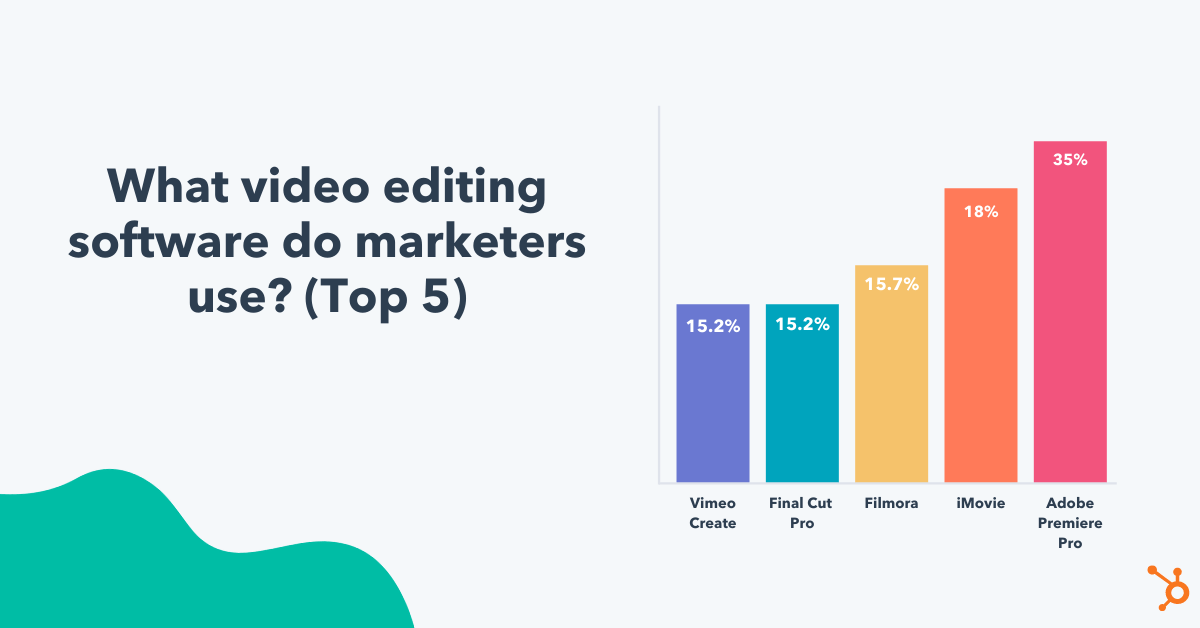
How do you create better videos?
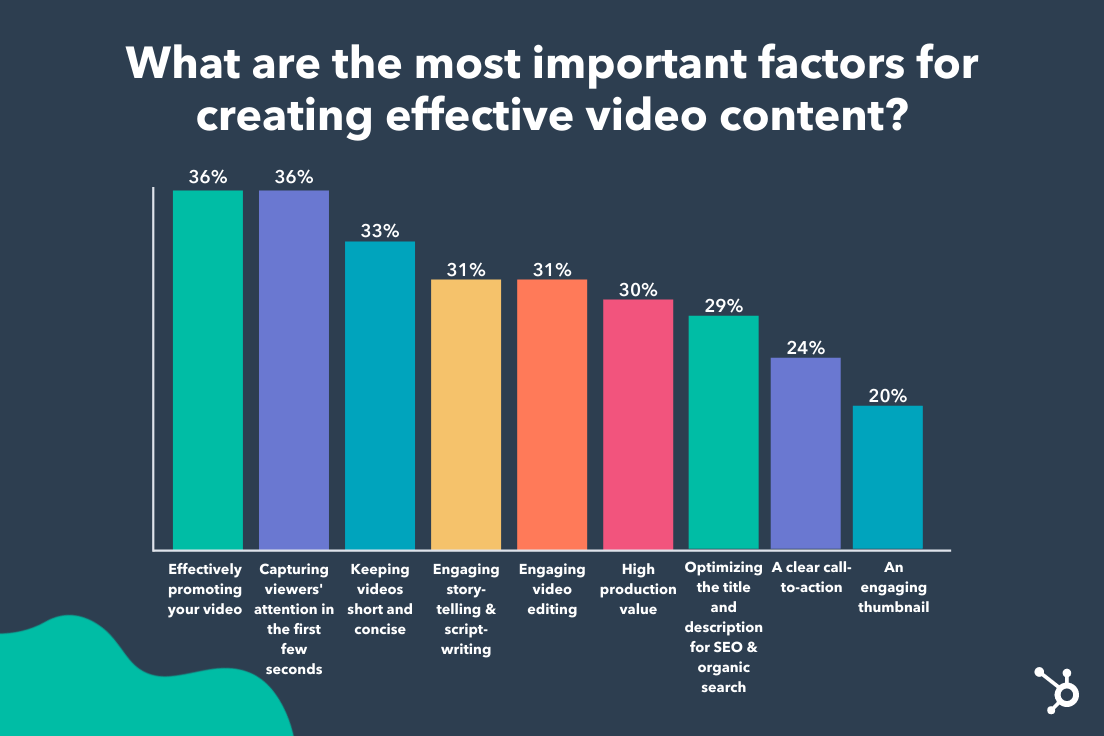
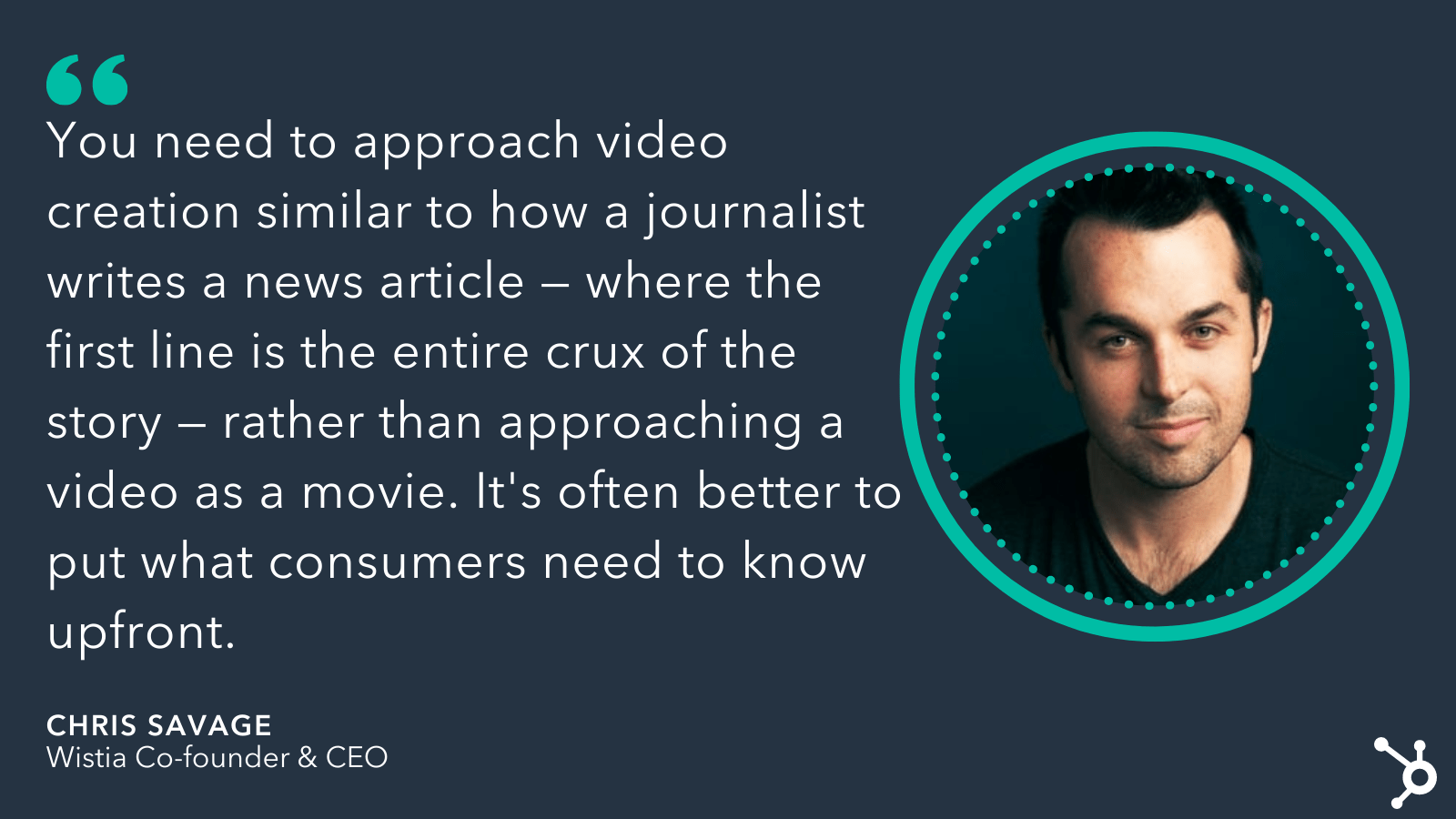
Placing videos in unexpected places
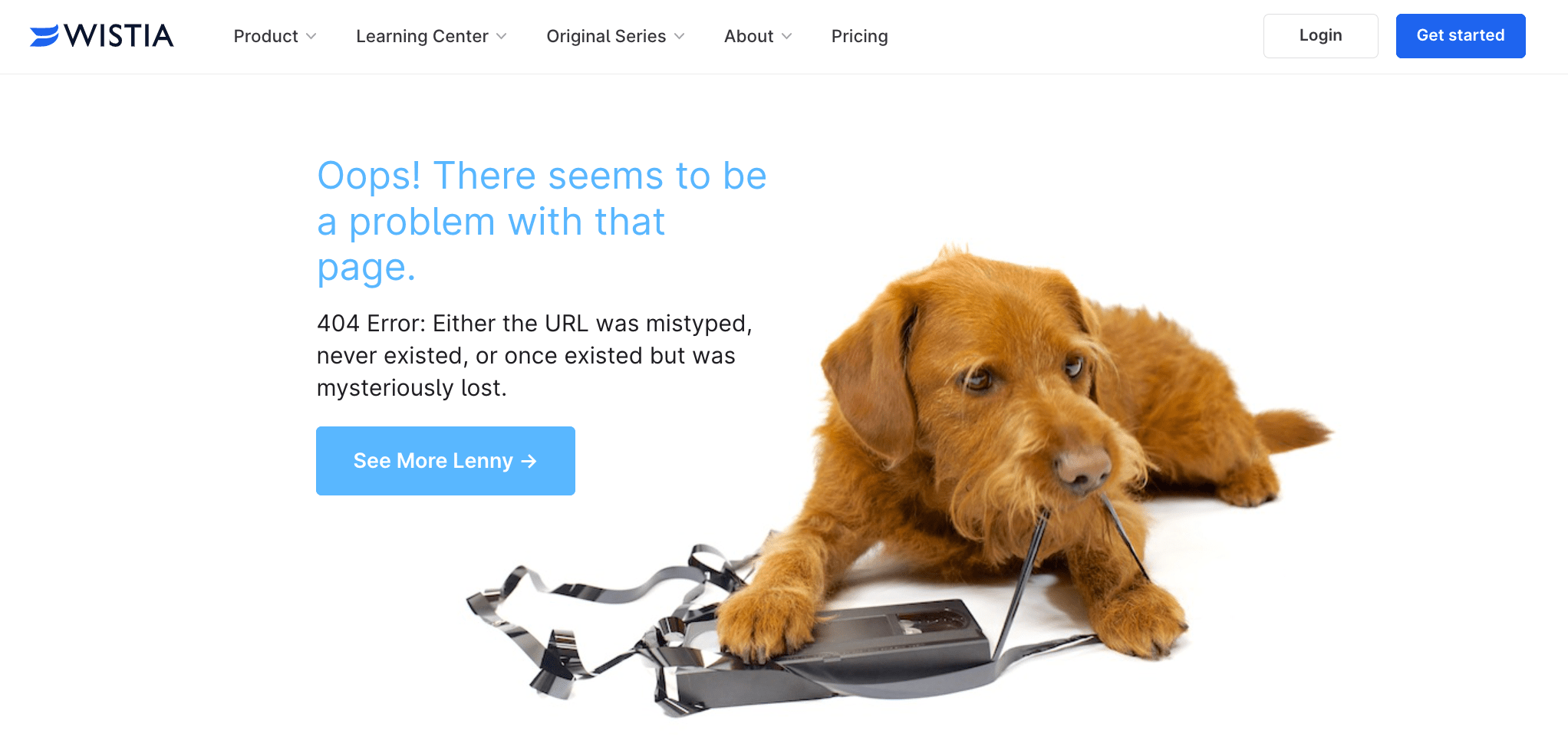 Email signatures are another great place to add videos. Adding video to your employees' email signature can really make your brand memorable and can capture the attention of new customers. A personalized video connecting them to your brand in an email signature can really go a long way in building trust and loyalty.
Email signatures are another great place to add videos. Adding video to your employees' email signature can really make your brand memorable and can capture the attention of new customers. A personalized video connecting them to your brand in an email signature can really go a long way in building trust and loyalty.What type of videos will brands start making in the future?
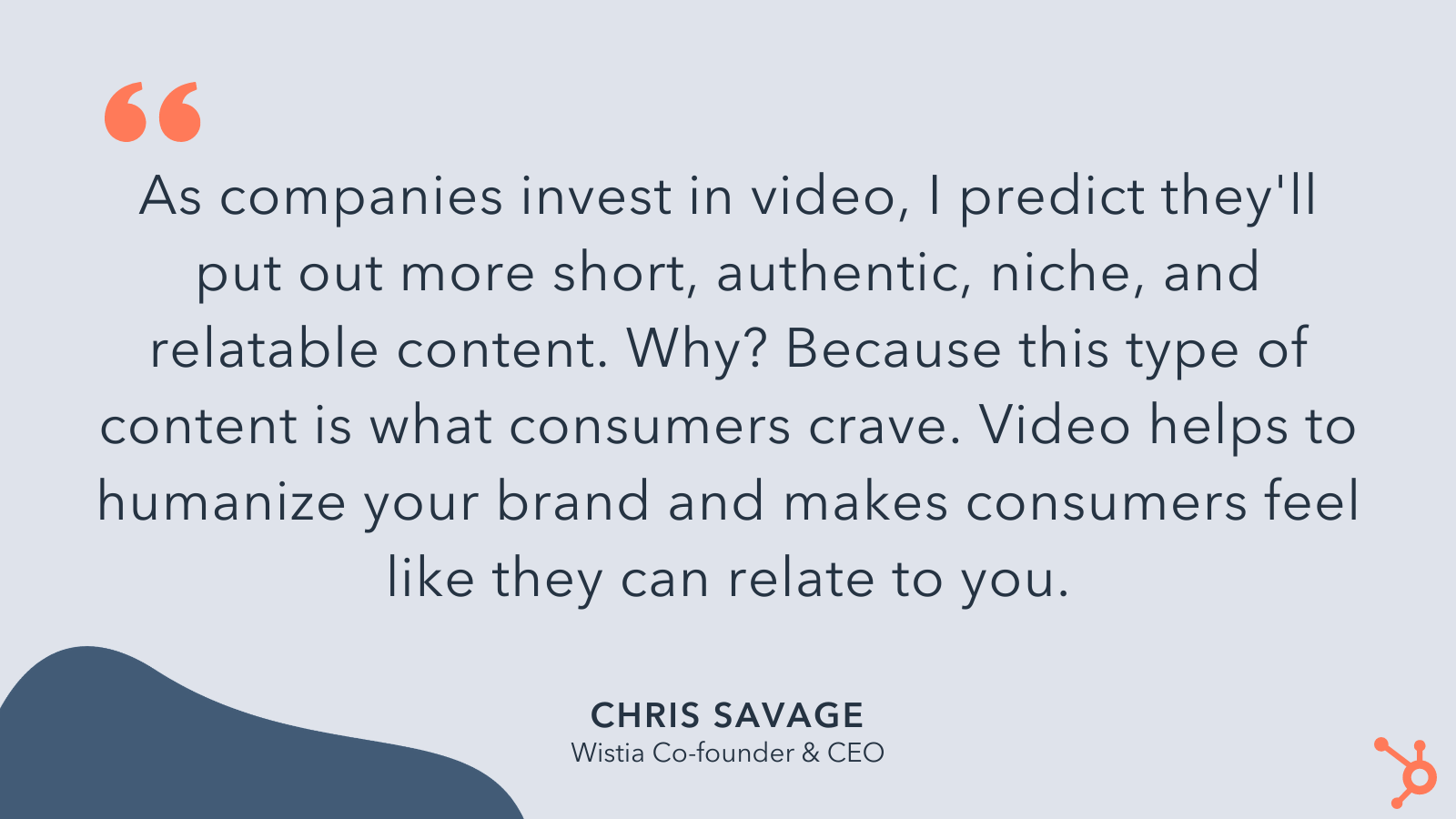
What comes next?
Originally published Jun 29, 2022 7:00:00 AM, updated June 29 2022

 Fransebas
Fransebas ![Video Marketing Starter Pack [Free Kit]](https://no-cache.hubspot.com/cta/default/53/8f27c677-d952-4663-8787-bf65c6a1ecf2.png)
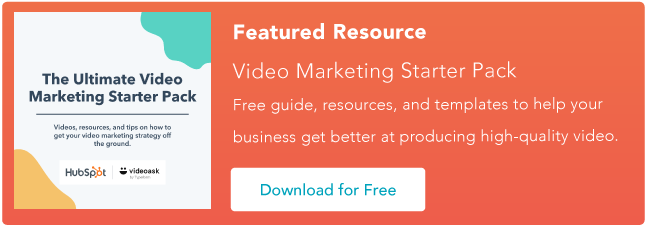








![How Apple iOS 15's Impacting Email Marketers [New Data]](https://blog.hubspot.com/hubfs/apple%20ios%2015%20email%20privacy%20impact%20data.jpg#keepProtocol)



![How Consumers Prefer to Interact With Brands [HubSpot Blog Survey]](https://blog.hubspot.com/hubfs/customer-interact-2017.jpg#keepProtocol)










